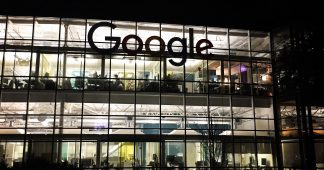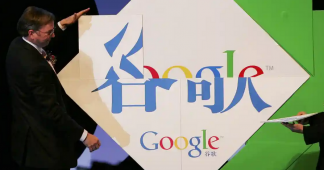By Kevin Reed
21 May 2020
The Wall Street Journal reported on May 15 that the US Department of Justice (DOJ) and a group of state attorneys general are close to filing antitrust lawsuits against Alphabet Inc., the corporate parent of Google. The first of these cases, being brought by the DOJ, is likely to be filed this summer, with the state cases expected to be filed in the fall.
The Journal report said that both sets of lawsuits will concentrate on Google’s browser-based online advertising business, while the DOJ case will also focus “more broadly on concerns that Google uses its dominant search business to stifle competition.”
Speaking with “people familiar with the matter,” the Journal report said that Attorney General William Barr had been committing considerable resources to investigate Google and its practices and “continues to treat it as a top priority,” even during the coronavirus pandemic.
Although specific details of the DOJ legal strategy have not been revealed, Barr said of the case in an interview with the Journal last March, “I’m hoping that we bring it to fruition early summer, and by fruition, I mean, decision time.”
The Justice Department is working with the states and sharing the information it has received from Google as part of its probe. Texas Attorney General Ken Paxton has been a leading spokesperson for the states, and he told the Journal, “We hope to have the investigation wrapped up by the fall.”
According to the Journal report, it is uncertain as to how the cases will be filed in the end, whether there will be one big case with states supporting the DOJ filing or if the states will file their own single case or if there will be multiple separate state cases, with each one taking up different aspects of the antitrust initiative against Google.
According to previously published reports, the antitrust probes of Google’s practices are aimed at showing how the company has consolidated its monopoly position as the number one search engine—with between 80 and 90 percent of all search traffic on the internet—and how it dominates the online advertising business as a byproduct of its search domination as well as its purchase of other technologies, such as YouTube (2006) and DoubleClick (2008), over the years.
Much of the DOJ and state investigations over the past year has included both requests for internal Google records and documents about its search and advertising tools as well as extensive interviews with the search giant’s competitors and customers. Among the rival firms providing information about their lack of search business are Yelp and DuckDuckGo.
Significantly, among the companies providing information about Google’s dominant position on the “sell side” of advertising are the publishing empires such as News Corp—which publishes the Wall Street Journal—the New York Times, Gannett Company and Condé Nast, all of which must go through Google’s digital ad exchange marketplace to find and sign agreements with advertising customers.
The Journal described the character of Google’s domination in a report last February: “Google’s ad-tech business consists of software used to buy and sell ads on sites across the web. The company owns the dominant tool at every link in the complex chain between online publishers and advertisers, giving it unique power over the monetization of digital content. Many publishers and advertising rivals have charged that it has tied these tools together and to its owned-and-operated properties such as search and YouTube in anticompetitive ways.”
An extensive analysis published by Omidyar Network on May 15—the same day as the Journal report on the lawsuits—describes in detail “the harm Google has caused and is causing to competition and to consumers.” In “Roadmap for a Digital Advertising Monopolization Case Against Google,” authors Fiona M. Scott Morton and David C. Danielli, who are both former Obama-era DOJ Antitrust Division officials, argue that the information contained in their report brings together the facts of “a compelling monopolization case.”
Scott and Danielli write that Google first became dominant in search and “for years held a virtual monopoly in search that it monetized by selling its inventory of space for digital ads responsive to user searches.” And, in order to drive competition out of the digital display advertising business, the company “wanted a ‘walled garden’ within which it could monetize without fear of competition, as Facebook and Amazon now have built.”
The company eventually launched “its Ads Data Hub, a tool that allows advertisers to upload customer data, combine it with search and other data from Google, and devise an advertising campaign, but not to take the data out—unless it is exported to one of Google’s ad tech services.” Once Google had customers within this system, it denied interoperability to competitive products such that “it services sellers and buyers and conducts the auctions through which they transact and owns the data necessary to target ads and track ad attribution as users traverse the web—to advantage itself vis-à-vis all other participants in the market.
The Omidyar Network report also goes into depth on Google’s acquisition of YouTube, which further cemented the company’s domination of advertising technology: “When Google places ads on YouTube, just as when it places ads on its own search results pages, Google pays no ‘traffic acquisition costs’ because it needn’t pay any publisher for access to the ‘eyeballs’ that will see or interact with the ads it helps place. Google keeps the entirety of the ad spend for itself.”
Although Scott and Danielli admit that the purpose of their analysis is not to provide “remedies for this harm to competition,” they do write that such remedies should “restore the competition that would characterize the market in the absence of Google’s anticompetitive conduct.”
The antitrust probe into Google’s practices dates back to an announcement made by the DOJ one year ago that a review of the Alphabet company’s “search and other businesses” was underway. At that time, Google all the other “Big Tech” monopolies such as Facebook, Apple and Amazon were under scrutiny from the DO and, the Federal Trade Commission, as well as the House Judiciary Committee for antitrust violations.
When these investigations and probes of the tech monopolies were being launched, the Special Counsel Investigation by Robert Mueller, also known as the “Russia probe,” was wrapping up its work, having published its report on April 18, 2019. Since then, there have been consistent and growing calls from within both parties of the US political establishment and the state for government regulation of the tech giants and, in some cases, calls for them to be “broken up” into smaller entities on the grounds that they are too large and powerful.
It should be recalled that the last big technology antitrust lawsuit in the US was launched by the DOJ against Microsoft Corporation in 1998. That case called for the Redmond, Washington company to be split up into two companies, one for its personal computer operating system software Windows and the other for its software applications such as Internet Explorer, Word, Excel and PowerPoint.
In 1999, the presiding judge found Microsoft in violation of sections of the Sherman Antitrust Act of 1890 against monopoly. The case was supported by nine US states. However, on appeal, the ruling was overturned and in 2001, in exchange for minor adjustments to its business practices, the DOJ abandoned its plan to force the company to split up.









